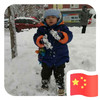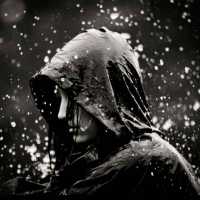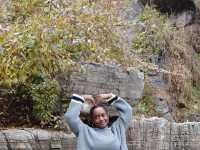The painted terracotta warriors and horses in the West Han Dynasty are typical symbols of Xuzhou Han culture. It was found about 300 meters west of the Chu Wang Mausoleum in 1984. It is a large underground army formation composed of six terracotta warriors and horses. The new building is two floors in part, with a construction area of about 6,000 square meters. The newly added "Xuzhou Han Dynasty Military Exhibition Hall" allows tourists to appreciate the development history, layout of the military array, production technology and other content, through the Qin Terracotta Warriors and Horses, Hanyang Mausoleum Terracotta Warriors and Horses, The comparison of Yangjiawan Terracotta Warriors and Horses in Xianyang, and the rich connotation of the era of Xuzhou Terracotta Warriors and Horses. The only underwater Terracotta Warriors and Horses Museum in China is newly built about 100 meters north of the Han Terracotta Warriors and Horses Museum (inside Lion Lake). The museum is two square-shaped bucket-shaped buildings, drawing on the Han Dynasty roof structure, showing four slopes. The exhibition is a restored crater and a carefully restored terracotta warriors and horses. The underwater Terracotta Warriors and Horses Museum together presented the complete military formation owned by the King of the Great Han Chu more than 2,000 years ago and the developed military, economic, technological miracle and civilization of the Han Dynasty.
;
Han Dynasty Terracotta Warriors Museum Review
4.3 /5126 Reviews
Recommended Attractions at Popular Destinations
Bangkok attraction near me | Manila attraction near me | Tokyo attraction near me | Hong Kong attraction near me | Seoul attraction near me | Taipei attraction near me | Los Angeles attraction near me | New York attraction near me | Shanghai attraction near me | Kuala Lumpur attraction near me | Shenzhen attraction near me | Osaka attraction near me | London attraction near me | Singapore attraction near me | Guangzhou attraction near me | San Francisco attraction near me | Beijing attraction near me | Macau attraction near me | Bali attraction near me | Paris attraction near me | Jakarta attraction near me | Ho Chi Minh City attraction near me | Orlando attraction near me | Phuket attraction near me | Chicago attraction near me | Toronto attraction near me | Cebu attraction near me | Istanbul attraction near me | Seattle attraction near me | Dallas attraction near me
Popular Attractions
Xinjiang Uygur Autonomous Region Museum | ITALGRASS - prato sintetico | 台湾 夜遊び キャバクラ カラオケ はシュガーベイビー | Disneytown | Hong Kong Disneyland | Taipei International Convention Center (TICC) | Oamaru Blue Penguin Colony | Puerto Princesa | Roppongi Hills | Xingyuan Park | Yonghong Wild Animal World | La Pedrera – Casa Milà | Golden Temple | Beijing Working People's Cultural Palace | Children's Park Puttalam | Zhoukoudian Peking Man Site Museum | Shidu Gushan Village | The White Dragon Pond of Miyun | Mos Water Park | Wat Si Maha Racha | Gajanan Maharaj Temple | Panic Park | Masjid Quba | Madina Masjid Chowk | Parc pentru câini | Sage Run Golf Course | Shree Chhatrapati Shivaji Maharaj Statue | Ste-Bernadette church | Te Anau Wildlife Park | Tekapo Springs
Popular Ranked Lists
Top 17 Local Restaurants in San Francisco | Top 21 Local Restaurants in George Town | Popular Luxury Hotels Near San Luca | Top 20 Local Restaurants in Yangzhou | Popular Family-friendly Attractions Near Sihong | Popular Family-friendly Attractions Near Miluo | Top 15 Local Restaurants in Doha | Popular Family-friendly Attractions Near Dahua | Popular Luxury Hotels Near Kosaka | Popular Premium Hotels in Yeosu | Popular Luxury Hotels Near Thung Tako | Popular Family-friendly Attractions Near Cao County | Popular Family-friendly Attractions Near Lushan | Popular Family-friendly Attractions Near Jianchuan | Popular Family-friendly Attractions Near Wangdu | Popular Premium Hotels in Sanliurfa | Popular Family-friendly Attractions Near Zhaozhou | Popular Family-friendly Attractions Near Jiang County | Top 4 Bars in Phi Phi Islands | Popular Family-friendly Attractions Near Xiaogan | Top 21 Local Restaurants in Florence | Popular Family-friendly Attractions Near Xuancheng | Popular Family-friendly Attractions Near Hangzhou | Popular Luxury Hotels Near Quy Nhon | Top 20 Local Restaurants in Lisbon | Popular Family-friendly Attractions Near Dongshan | Popular Luxury Hotels Near Bainguinim | Popular Luxury Hotels Near Dongwe | Popular Luxury Hotels Near Klojen
Payment Methods
Our Partners
Copyright © 2024 Trip.com Travel Singapore Pte. Ltd. All rights reserved
Site Operator: Trip.com Travel Singapore Pte. Ltd.
Site Operator: Trip.com Travel Singapore Pte. Ltd.




















